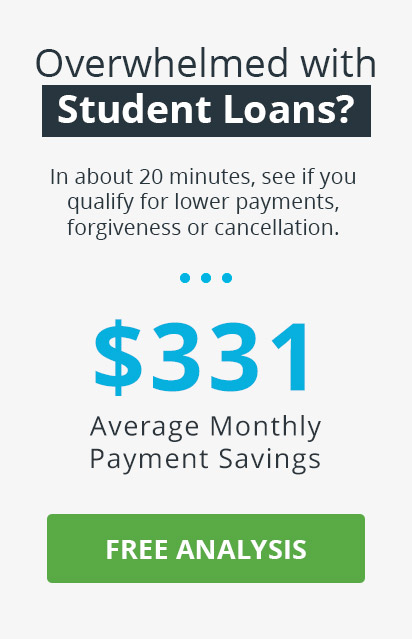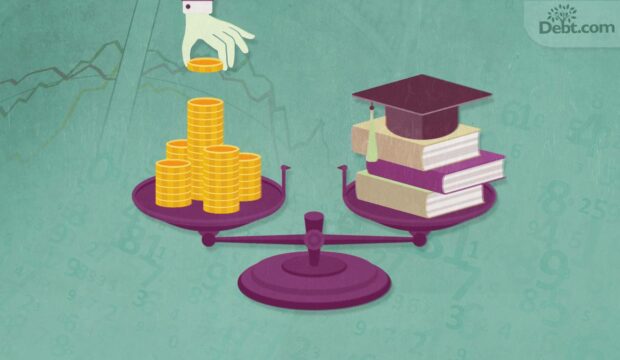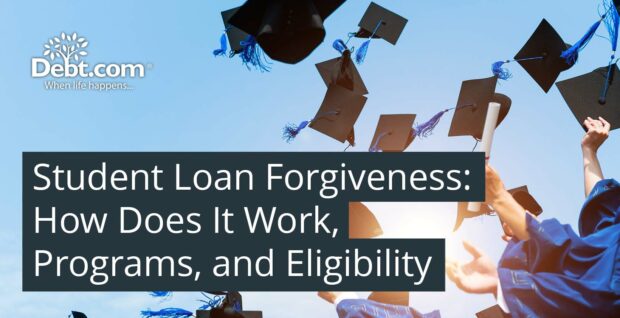
Student loan consolidation entails the acquisition of a new loan to settle existing student loans, resulting in a single monthly payment rather than multiple obligations. Student loan debt consolidation is applied to all federal and a portion of private student loans, simplifying repayment and potentially extending the repayment term, reducing monthly payment amounts. Consolidation leads to the forfeiture of specific advantages previously associated with the original loans. Borrowers must have a commendable repayment history, be actively making loan payments, not be enrolled in school, and meet minimum loan balance requirements to be eligible.
Debtors must comprehend student loan consolidation due to its substantial influence on a borrower’s financial future and repayment strategy. Debtors who consolidate student loans simplify financial administration and mitigate the risk of delinquency by consolidating multiple loans into a single entity. It is advantageous for new professionals transitioning from education to work, as it extends the repayment term, reducing monthly payments and alleviating financial stress.
A comprehensive understanding enables borrowers to make informed decisions, ensuring that they assess the advantages and disadvantages, particularly because consolidating federal loans results in the loss of benefits such as income-driven repayment plans or loan forgiveness programs. Comprehending consolidation alternatives assists borrowers in negotiating more favorable terms and securing reduced interest rates, resulting in substantial financial savings. The knowledge facilitates long-term financial planning, allowing borrowers to make strategic decisions consistent with their objectives and preventing protracted debt.
The U.S. Department of Education consolidates federal student loans by issuing a new loan to repay the borrower’s existing federal loans, resulting in a single consolidated loan. The borrower begins by choosing which loans to consolidate, possibly excluding loans with specific benefits. The U.S. Department of Education evaluates their financial information after the borrower submits a Direct Consolidation Loan application. The government works with the present loan servicers to discharge the previous debts and replace them with a new Direct Consolidation Loan after approval. Repayment is made in monthly installments over the chosen term, with an interest rate that is a weighted average of the original rates, rounded to the nearest one-eighth of a percent.
Private student loan consolidation, or refinancing, involves a private lender repaying the borrower’s existing loans and issuing a new loan with different terms. The borrower begins consolidating student loans by contacting a private lender who evaluates their credit score, income, and debt-to-income ratio. The borrower begins repaying the new loan as soon as granted, meaning fewer monthly payments or a shorter repayment period. Consolidating federal loans into private loans forfeits federal benefits like income-driven repayment plans and loan forgiveness. Borrowers must compare offers from various lenders and continue making payments on existing loans until the consolidation process is complete, ensuring the method simplifies repayment and potentially leads to financial savings.
Table of Contents
What is Student Loan Consolidation?
Student loan consolidation concerns the acquisition of a new loan to discharge existing student loans, resulting in a single monthly payment rather than multiple obligations. Student loan consolidation streamlines repayment by applying to all federal and some private student loans. The consolidation resulted in a decrease in the monthly payment amount, which potentially extended the repayment term. Consolidation of loans results in the loss of specific privileges previously associated with the loans. Eligibility requires the debtor not to be enrolled in school, to make loan payments actively, to maintain a commendable repayment history, and to satisfy minimum loan balance prerequisites.
What is the Importance of Understanding Student Loan Consolidation?
The importance of understanding student loan consolidation lies in its profound influence on a borrower’s financial trajectory and repayment methodology. Consolidating student loans merges multiple obligations into a singular monthly payment, enhancing financial coherence and mitigating the risk of delinquency. Consolidating loans for students facilitates the extension of the repayment term, diminishing monthly payment amounts and alleviating financial strain, particularly for developing professionals transitioning from academia to the workforce.
A nuanced comprehension of student loan consolidation equips borrowers with the discernment necessary to make well-informed financial decisions. Recognizing eligibility prerequisites and the potential forfeiture of benefits inherent to the original loans ensures that borrowers evaluate the merits and drawbacks judiciously. For example, certain federal loan advantages, such as income-driven repayment plans or loan forgiveness programs, are forfeited upon consolidation. An in-depth understanding allows borrowers to avoid inadvertently relinquishing these pivotal benefits.
A grasp of student loan consolidation empowers borrowers to negotiate more favorable loan terms. Borrowers who have enhanced their credit profile since the inception of their original loans qualify for a consolidated loan with a reduced interest rate, diminishing the overall cost of the loan. Understanding the conditions of various consolidation options in detail allows borrowers to choose wisely, potentially achieving substantial financial savings over the loan’s duration.
An intricate understanding of student loan consolidation bolsters long-term financial strategizing. Understanding how consolidation affects the repayment amount and interest earned helps borrowers make well-informed, calculated decisions that complement their larger financial goals. The foresight prevents protracted indebtedness and enables borrowers to allocate resources more effectively towards other financial objectives, such as capital accumulation or investment endeavors.
How does Consolidation of Federal Student Loans Work?
Consolidation of federal student loans works by the U.S. Department of Education issuing a new loan to pay off a borrower’s existing federal loans, resulting in a single consolidated loan. The borrower commences by selecting which loans to consolidate, encompassing all their federal loans or excluding the ones with unique benefits, such as Perkins Loans, eligible for forgiveness.
The U.S. Department of Education reviews the borrower’s financial particulars and references before approving upon submitting a Direct Consolidation Loan application. The government works with the borrower’s present loan servicers to cancel the old loans after they are approved and replace them with a new Direct Consolidation Loan that combines the sums of all the previous loans. The new loan or the consolidated Direct Student Loans must be repaid through monthly installments over the chosen repayment tenure, which is extended to attenuate monthly payments. The interest rate for federal student loan consolidation remains a weighted average of the original rates.
For example, consider a borrower consolidating a $3,500 Stafford Loan with a 3.6% interest rate and a $6,500 Stafford Loan with a 6.8% interest rate. The new interest rate is a weighted average of these rates if the borrower chooses a Direct Consolidation Loan. It is calculated by multiplying $3,500 by 3.6% and $6,500 by 6.8%, then dividing the sum by the total loan amount of $10,000, resulting in 5.68%, rounded to 5.75%. The consolidation process simplifies monthly payments, making them more manageable and potentially qualifying the borrower for income-driven repayment plans or other federal benefits.
How does Consolidation of Private Student Loans Work?
Consolidation of private student loans works by a private lender paying off the borrower’s existing loans and issuing a new loan with different terms. Private loan consolidation, known as refinancing, amalgamates multiple loans into one, potentially offering a lower interest rate and varied repayment period based on the borrower’s creditworthiness.
Borrowers who consolidate private student loans start through a private lender, who meticulously evaluates their credit score, income, and debt-to-income ratio. The borrower begins repayment on the newly consolidated loan after approval. Private student loan consolidation results in reduced monthly payments or an accelerated repayment term, contingent on the borrower’s financial aspirations.
For instance, a borrower with high-interest loans secures a significantly lower rate after obtaining stable employment, diminishing their monthly obligations and total interest incurred. Consolidating federal loans into a private loan forfeits access to federal benefits such as income-driven repayment plans and loan forgiveness.
Borrowers must compare offers from various lenders and ensure continued payments on existing loans until the consolidation process is finalized. Private student loan consolidation streamlines repayment and yields financial savings but necessitates careful deliberation of the borrower’s fiscal circumstances and prospective requirements.
What is the Key Difference between Student Loan Consolidation and Refinancing?
The key differences between student loan consolidation and refinancing encompass their core objectives and methodologies. Student loan consolidation involves consolidating multiple federal loans into a singular new federal loan, streamlining the repayment process, and potentially qualifying borrowers for specific government programs. The approach does not reduce interest rates but calculates a weighted average of the existing rates. Consolidation for student loan consolidation vs. refinancing simplifies payments while preserving access to federal loan protections, such as income-driven repayment plans and loan forgiveness programs.
Student loan refinancing is facilitated through private lenders with the primary aim of substituting one or more existing loans, whether federal or private, with a new private loan that ideally offers a lower interest rate. Refinancing is geared towards diminishing the overall cost of the loan by securing a more favorable rate based on the borrower’s financial profile, including credit history and income. It leads to significant savings over the loan’s duration but entails the forfeiture of federal loan benefits, such as flexible repayment options and loan forgiveness.
The eligibility criteria and retention of benefits further distinguish student loan consolidation and refinancing. Consolidation is available to all borrowers with federal loans, allowing them to merge their loans without undergoing credit assessments or losing federal protections. Refinancing necessitates a credit evaluation and is most advantageous for borrowers with robust credit scores and stable incomes who secure superior terms. The borrower benefits associated with federal loans are lost with refinancing, debtors must carefully assess long-term financial needs and goals before choosing it. Refinancing simplifies payments by combining many loans into one.
What are the Pros and Cons of Student Loan Consolidation?
There are a lot of pros and cons of consolidating student loans, which aid in the decisions of borrowers whether to pursue it or to stay in having multiple student loans. The disadvantages of consolidating student loans must not outweigh the benefits for a borrower to consider pursuing it. The pros and cons of student loan consolidation are listed in the table below.
| Pros | Cons |
|---|---|
| Streamlines repayment process | Elevated overall interest paid over the loan duration |
| Consolidates into a singular monthly payment | Absence of interest rate reduction |
| Potentially diminishes monthly obligations | Forfeiture of progress toward loan forgiveness |
| Access to federal repayment schemes | Capitalization of unpaid interest |
| Eligibility for alternate repayment plans | Loss of specific borrower advantages |
| Option to change loan servicer | Prolonged repayment period increases total debt |
| Capacity to extend repayment term | Potential for higher costs due to extended term |
When is Student Loan Consolidation a Good Idea?
Student loan consolidation is a good idea when a borrower has multiple federal loans, seeks to qualify for federal repayment programs, wants to change their loan servicer, needs to address unpaid interest, or is in default. Consolidating multiple federal loans into a singular Direct Consolidation Loan streamlines repayment by consolidating various loans with disparate servicers, payment dates, and interest rates into one manageable monthly payment. It significantly alleviates the administrative burden and mitigates the risk of missed payments.
An opportune time for consolidation arises when a borrower seeks eligibility for federal programs such as income-driven repayment plans or Public Service Loan Forgiveness (PSLF). For instance, loans under the Federal Family Education Loan (FFEL) Program or Perkins Loans require consolidation into a Direct Consolidation Loan to access these benefits, potentially leading to substantial reductions in the total repayment amount over time.
Consolidation is advantageous for borrowers dissatisfied with their current loan servicer. Borrowers who consolidate choose a different servicer, which improves their overall experience with the service, especially if they have had problems with communication or payment processing.
For example, consider a borrower with $27,000 in unsubsidized federal loans at a 6% interest rate and $3,890 in unpaid interest. Consolidation adds the unpaid interest to the principal, resulting in a new balance of $30,890. The new interest rate, calculated as a weighted average of the original rates, ensures predictability and lower monthly payments by extending the repayment period, making the debt more manageable monthly.
Borrowers in default on one or more federal loans benefit from consolidation to regain eligibility for federal benefits such as deferment, forbearance, and income-driven repayment plans. Meeting specific conditions helps rehabilitate their financial standing and avert the severe consequences of default, rendering consolidation a critical step in managing their debt effectively.
Is the Eligibility Criteria different for Federal and Private Student Loan Consolidation?
Yes, the eligibility criteria are different for federal and private student loan consolidation. Federal student loan consolidation, administered by the U.S. Department of Education, is exclusive to federal student loans. Borrowers must have at least one Direct Loan or Federal Family Education Loan (FFEL) in repayment or within the grace period to be eligible for federal consolidation. Borrowers in default must make satisfactory repayment arrangements or agree to repay their new Direct Consolidation Loan under an income-driven repayment plan. Borrowers must be enrolled in school at most half-time. Federal loan consolidation does not require a credit check, allowing all federal loans to be consolidated irrespective of the borrower’s credit history.
Private student loan consolidation, often termed refinancing, is facilitated through private entities such as banks, credit unions, and online financial institutions. The eligibility criteria for private consolidation are more stringent, normally necessitating a robust credit score, a stable income, and a favorable debt-to-income ratio. Lenders conduct a thorough credit check to ascertain the borrower’s creditworthiness. Private lenders require borrowers to have completed their degree, although some lenders offer refinancing options to non-graduates. Borrowers with subpar credit need a co-signer to qualify for refinancing at competitive interest rates. Private consolidation encompasses federal and private loans, but consolidating federal loans into private loans results in the forfeiture of federal protections and benefits.
The eligibility criteria for federal student loan and private student loan are listed in the table below.
| Federal Student Loan | Private Student Loan |
|---|---|
| Possession of at least one Direct Loan or FFEL in repayment or within the grace period | Stable income and favorable debt-to-income ratio required |
| Borrowers in default must make satisfactory repayment arrangements or agree to an income-driven repayment plan | Comprehensive credit check required |
| Enrollment in school must be less than half-time | Degree completion is sometimes required |
| No credit check required | Strong credit score required |
| All federal loans eligible irrespective of credit history | Co-signer is necessary for borrowers with poor credit |
How does Student Loan Consolidation Impact your Credit Score?
Student loan consolidation impacts your credit score by influencing factors such as payment history, credit utilization, credit inquiries, and the average age of credit accounts, yielding positive and negative effects. Student loan consolidation positively affects credit score by streamlining debt management. Consolidating multiple loans into a single payment reduces the likelihood of missed or late payments, enhancing the debtor’s payment history, a critical component in the credit score. A single loan lowers the debtor’s credit utilization ratio by replacing several smaller balances with one larger balance, increasing available credit and improving the score. Another advantage is extending the credit history if the consolidated loan has a longer term, positively influencing the debtor’s credit history.
Student loan consolidation initially lowers the debtor’s credit score due to the hard credit inquiry conducted by the lender during the application process. The inquiry causes a slight, temporary decline in the debtor’s score. The credit utilization ratio and overall debt levels are diminished if the consolidation results in a higher loan balance or an extended repayment term. The consolidation process involves closing several existing accounts, which reduces the average age of the credit accounts, another factor in the credit score calculation.
How to Consolidate Student Loans?
To consolidate student loans, there are five steps to follow. Firstly, a thorough assessment of the loan portfolio must be performed, distinguishing between federal and private loans. Federal loans qualify for federal consolidation, whereas a hybrid of federal and private loans necessitates consolidation through private financial institutions. The discernment is pivotal in selecting the appropriate consolidation pathway.
Secondly, evaluating one’s financial objectives becomes imperative. The choice between federal consolidation and private refinancing is influenced by the goal of reducing monthly installments, securing a better interest rate, or streamlining the repayment procedure. An unequivocal understanding of financial aspirations ensures that the selected consolidation method aligns with the debtor’s overarching financial strategy.
Thirdly, eligibility for student loan consolidation must be ensured. Confirm that at least one Direct Loan or FFEL is in repayment or within the grace period for federal consolidation. Private lenders typically stipulate a robust credit score, a steady income stream, and a favorable debt-to-income ratio. Adhering to these eligibility criteria is indispensable for successfully consolidating student loans through either federal or private channels.
Fourthly, engage in comprehensive research of lenders and programs. Delve into federal consolidation options via the U.S. Department of Education’s Federal Direct Loan Program and juxtapose offers from multiple private lenders. The diligent research facilitates the identification of the most advantageous terms and conditions, ensuring that the debtor makes a well-informed decision. Gathering necessary documentation, including loan specifics, personal identification, proof of income, and credit reports, ensures a seamless application process.
Lastly, proceed with the application process. Use the Federal Student Aid website to fill out the Direct Consolidation Loan application to apply for federal consolidation. Apply online for private consolidation with the lender of choice. The institutions review the financial details and run a credit check. Debtors must review the terms of the new consolidated loan meticulously, continue making payments during the consolidation process to avert any adverse impact on the credit score and ensure the successful finalization of the consolidation. Monitor the new loan account regularly to verify accurate payment processing and update personal budgets to reflect the new payment schedule upon completion.
How to Consolidate Federal Student Loans?
To consolidate federal student loans, follow the steps below.
- Aggregate the Loan Information. Compile all pertinent details about federal student loans, including loan servicer information, loan balances, and interest rates when consolidating federal student loans. The information is accessed through the Federal Student Aid (FSA) website or the loan servicer’s portal.
- Access the Federal Student Aid (FSA) Website. Navigate to studentaid.gov and log in using the assigned FSA ID. The debtor must first create an FSA ID if they don’t already have one.
- Complete the Direct Consolidation Loan Application. Locate the section titled “Complete a Consolidation Loan Application and Promissory Note.” Adhere to the instructions to fill out the application, selecting the federal loans the debtor wishes to consolidate. They must furnish personal information and loan details and choose a repayment plan.
- Select a Repayment Plan. Pick a repayment strategy during the application process. Options include Income-Driven Repayment (IDR) plans, which base the debtor’s monthly payment on their income and family size, and standard repayment plans. Utilize the Loan Simulator tool on the FSA website to compare repayment plans and determine the most suitable option for the debtor’s financial circumstances.
- Submit the Application. Examine the terms and conditions carefully after deciding on the repayment plan for the Federal Student Loans and finishing the application. Apply electronically through the FSA website. The debtors must receive a confirmation email once their application has been successfully submitted.
- Maintain Payments on Existing Loans. Continue making payments on the current federal student loans until the debtors receive confirmation that their loans have been consolidated. The consolidation process takes several weeks, and missing payments adversely affect their credit.
- Monitor the Consolidation Process. Maintain communication with the new loan servicer and monitor the status of the consolidation application. The debtors receive details about their new loan, including the new balance, interest rate, and repayment plan, once the consolidation is complete. Ensure the records are updated, and payments are made according to the new terms.
How to Consolidate Private Student Loans?
To consolidate private student loans, follow the steps below.
- Evaluate Financial Goals and Creditworthiness. Assess financial objectives, such as lowering monthly payments, securing a better interest rate, or simplifying repayment. Check credit score, income, and debt-to-income ratio, as private lenders require strong creditworthiness for favorable terms. Obtain a free credit report from credit bureaus like Equifax, Experian, or TransUnion.
- Research and Compare Lenders. Investigate various private lenders, such as banks, credit unions, and online financial institutions like SoFi, Earnest, and LendKey. Compare interest rates, loan terms, fees, and borrower benefits. Use comparison tools available on financial websites to find the most competitive offers.
- Prequalify with Multiple Lenders. Prequalification involves a soft credit check that does not impact the credit score. Provide the required information, such as the income and the specifics of the current private student loans, to get an estimate of the interest rates and loan terms. It helps in comparing offers without affecting credit.
- Gather Necessary Documentation. Collect all required documents, including proof of income (pay stubs, tax returns), identification (driver’s license, social security number), and details of existing loans (statements, account numbers). Having these documents ready streamlines the application process.
- Submit a Formal Application. Choose the lender with the most favorable terms and submit a formal application to start consolidating private student loans. It involves a hard credit check, temporarily affecting the credit score. Provide all necessary documents and complete the application form accurately. Some lenders offer an online application process for convenience.
- Review and Sign the Loan Agreement. Carefully review the loan agreement, including the interest rate, repayment terms, fees, and conditions. Ensure all details align with the expectations and financial goals. Sign the agreement to accept the terms. Keep a copy of the signed agreement for records.
- Continue Making Payments and Transition to New Loan. Maintain payments on existing loans until the new consolidation loan is disbursed. The lender pays off the existing loans and replaces them with the new consolidated loan. Monitor the account to ensure a smooth transition and pay the new lender according to the agreed terms.
Can Interest Rate Improve if you Consolidate Student Loans?
Yes, the interest rate can improve if you consolidate student loans. Private student loan consolidation results in a lowered interest rate, notably if the borrower’s creditworthiness has improved since the initial loans were procured. Private lenders such as SoFi, Earnest, and LendKey offer refinancing options that diminish the interest rate based on an elevated credit score, stable income, and a reduced debt-to-income ratio. For example, a private lender offers a 4% student loan consolidation interest rate on a refinance if a borrower has a private student loan interest rate of 7% due to a weak credit history. It significantly reduces the cost of the loan over its term. It is advantageous for debtors with high-interest private loans or a combination of federal and private loans aiming to reduce their overall interest burden.
The interest rate does not go down when consolidating federal student loans. The new interest rate on combined federal loans made possible by the Federal Direct Consolidation Loan program is calculated as the weighted average of the interest rates on the individual loans, rounded to the closest one-eighth of a percent. It implies that the rate remains the same even though the interest rate becomes fixed, and the borrower benefits from streamlined payments and access to diverse repayment plans. For instance, the rate that results from a borrower consolidating two Direct Loans, one at 4.5% and the other at 6.8%, is a weighted average of the two, slightly rounded up. The U.S. Department of Education administers the process, and the principal advantage is the simplification of loan management rather than a reduction in borrowing costs.
The factors that affect the interest rate are listed below.
- Elevated Credit Score: A higher credit score signifies enhanced creditworthiness, enabling borrowers to secure lower interest rates when refinancing their private student loans. Lenders perceive borrowers with superior credit scores as lower risk, which results in more advantageous loan terms.
- Stable Income: A stable and substantial income exemplifies the borrower’s capacity to make consistent loan payments, qualifying them for reduced interest rates. Lenders favor borrowers with reliable income streams, as it mitigates the risk of default.
- Reduced Debt-to-Income Ratio: A diminished debt-to-income ratio indicates that the borrower has a sustainable level of debt relative to their income, increasing their likelihood of obtaining a lower interest rate. Lenders utilize the ratio to evaluate a borrower’s financial soundness and repayment capability.
What are the Repayment Plans for Student Loan Consolidation?
The repayment plans for student loan consolidation are listed below.
- Standard Repayment Plan: A standard repayment plan encompasses a fixed monthly payment over up to 10 years. The plan ensures expeditious loan amortization with consistent monthly installments.
- Graduated Repayment Plan: A graduated repayment plan commences with lower payments that incrementally escalate, typically biennially, over up to 10 years. The plan is structured for borrowers anticipating an augmentation in income over time.
- Extended Repayment Plan: An extended repayment plan is a type of student loan repayment program that offers fixed or graduated payments over 25 years. Borrowers must possess over $30,000 in outstanding Direct Loans to qualify for federal loans. The plan reduces monthly payments by elongating the repayment term.
- Income-Contingent Repayment (ICR) Plan: Income-contingent repayment (ICR) plans’ payments are recalibrated annually based on income, family size, and the aggregate amount of Direct Loans. The repayment period extends to 25 years, with any remaining balance after 25 years of qualifying payments potentially being forgiven.
- Income-Based Repayment (IBR) Plan: The income-based repayment (IBR) plan caps payments at 10-15% of discretionary income, recalibrated annually based on income and family size. The repayment term spans 20-25 years, with any remaining balance forgiven post-term.
- Pay As You Earn (PAYE) and Revised Pay As You Earn (REPAYE) Plans: Payments are capped at 10% of discretionary income. PAYE is accessible to new borrowers as of October 1, 2007, whereas REPAYE is available to all Direct Loan borrowers. REPAYE provides interest subsidies.
- Fixed-Rate Plan: A fixed-rate plan proffers a fixed interest rate for the loan’s duration. Payments remain invariant each month, offering predictability and stability in repayment.
- Variable-Rate Plan: The interest rate fluctuates periodically, usually in accordance with an index. Monthly payments vary contingent on changes in the interest rate.
- Interest-Only Repayment Plan: Borrowers only remit interest for a specified period, generally the initial few years of the loan term. It diminishes initial payments but does not decrease the principal balance.
- Hybrid Repayment Plan: A hybrid repayment plan amalgamates features of fixed and variable-rate plans. For instance, a borrower begins with a fixed rate for several years, subsequently transitioning to a variable rate.
Are Forgiveness Programs still Available for Student Loan Consolidation?
Yes, forgiveness programs are still available for student loan consolidation. Forgiveness programs remain accessible for student loan consolidation but predominantly pertain to federal student loans. Borrowers who combine their federal student loans under the Federal Direct Consolidation Loan program are still eligible for forgiveness programs, including Income-Driven Repayment (IDR) and Public Service Loan Forgiveness (PSLF).
Public Service Loan Forgiveness (PSLF) necessitates that borrowers work full-time for a qualifying employer, such as a government organization or a non-profit entity, and make 120 qualifying payments under an appropriate repayment plan. The remaining loan sum is forgiven after these requirements are met. Consolidating federal loans into a Direct Consolidation Loan does not disqualify borrowers from PSLF, but it resets the payment count, meaning any prior qualifying payments made before consolidation do not contribute to the 120 required for forgiveness.
Any residual loan balance is forgiven following 20 or 25 years of qualifying payments under IDR schemes such as Income-Based Repayment (IBR), Pay As You Earn (PAYE), and Revised Pay As You Earn (REPAYE). The borrower must continue making payments under an IDR plan after consolidating debts into a Direct Consolidation Loan to be eligible for forgiveness. Consolidation resets the payment count, like PSLF, so payments made under the original loans do not contribute toward the qualifying repayment period for student loan forgiveness.
Forgiveness programs are not available for private student loan consolidation. Borrowers who refinance their federal loans through private lenders lose their eligibility for federal benefits, such as loan forgiveness programs. Private lenders such as SoFi, Earnest, and LendKey proffer refinancing options that furnish more favorable terms but do not encompass forgiveness provisions.
Is Consolidating Student Loans Worth It?
Yes, consolidating student loans is worth it. Consolidating federal student loans simplifies repayment by consolidating multiple loans into a single obligation with one monthly payment. It benefits borrowers who struggle to manage numerous payments and seek to simplify their financial commitments. Consolidation grants access to diverse repayment plans, such as Income-Driven Repayment (IDR) plans, which make monthly payments more manageable by basing them on income and family size. Borrowers become eligible for forgiveness programs such as Public Service Loan Forgiveness (PSLF) if not previously eligible.
Consolidating or refinancing private student loans lowers the interest rate significantly if the borrower’s creditworthiness has improved since the loans were first obtained. It results in substantial savings over the loan’s tenure and alleviates the monthly payment burden.









